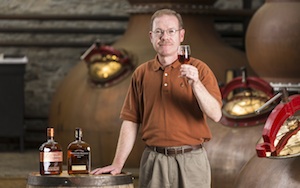If you haven’t heard how well scotch whisky has been doing in recent months then, quite frankly, you must have been living in a cave.
Scotch has been everywhere. New distilleries here, record growth and export figures there, new market opportunities, ridiculously expensive product launches… scotch whisky has found it into the newspapers and on to the television screens with an almost monotonous predictability.
Scotch has always lorded it a bit when it comes to whisky, of course, and rightly so, but over the past year or so you’d think it was the only show in town. It’s not. Far from it – but so slick are the marketing and media folk looking after it, it’s been shouting louder than everyone else.
Are you equally aware that Irish whiskey is enjoying its healthiest resurgence for more than half a century, that there is more world whisky being produced than at any other time, and that even Canada’s normally staid and unspectacular whisky industry is proving to be surprisingly dynamic and innovative?
But the market which is really exciting whisky fans is the American one. In simple terms it has undergone nothing short of a revolution and it shows no sign of slowing up soon.
Craft distillers
The explosion in the number of craft distillers in America has boomed from virtually none five years ago to more than 500, and counting, now. And that in turn has kickstarted a surge of expansion and innovation in the traditional bourbon heartlands of Kentucky.
A revolution, then, but a quiet one. We may not have heard much about what’s happening Stateside up to now – most of it has gone under the whisky radar so far – but that might all be about to change.
Traditionally the American whiskey industry has consisted of Jack Daniel’s and George Dickel in Tennessee, a handful of bourbon producers in Kentucky, and a smattering of small distilleries elsewhere across the States.
Most American whiskey is dominated by a recipe made up of more than 50% corn as well as two other grains, though before the current craft boom there was the odd single malt whiskey producer and a smattering of rye and wheat whiskeys.
The craft distilling boom has changed all that. Encouraged by the American Distilling Institute, there are former lawyers, engineers and accountants producing as little as one barrel a week but thinking outside the conventional box.
“We have members using different woods, working with different grains, messing with maturation times, rediscovering old whiskey recipes and inventing new ones,” says American Distilling Institute president Bill Owens. “There are some great new whiskeys out there and the distillers are giving people something different to be excited about.”
The explosion in new distilleries has been created by various factors. America is experiencing a surge of interest in locally produced foods and spirits drinks; is attracted by drinks with proven heritage and provenance; and seems willing to embrace baggage-free new whiskey producers who are bringing style and panache to what had been a staid drinks category.




